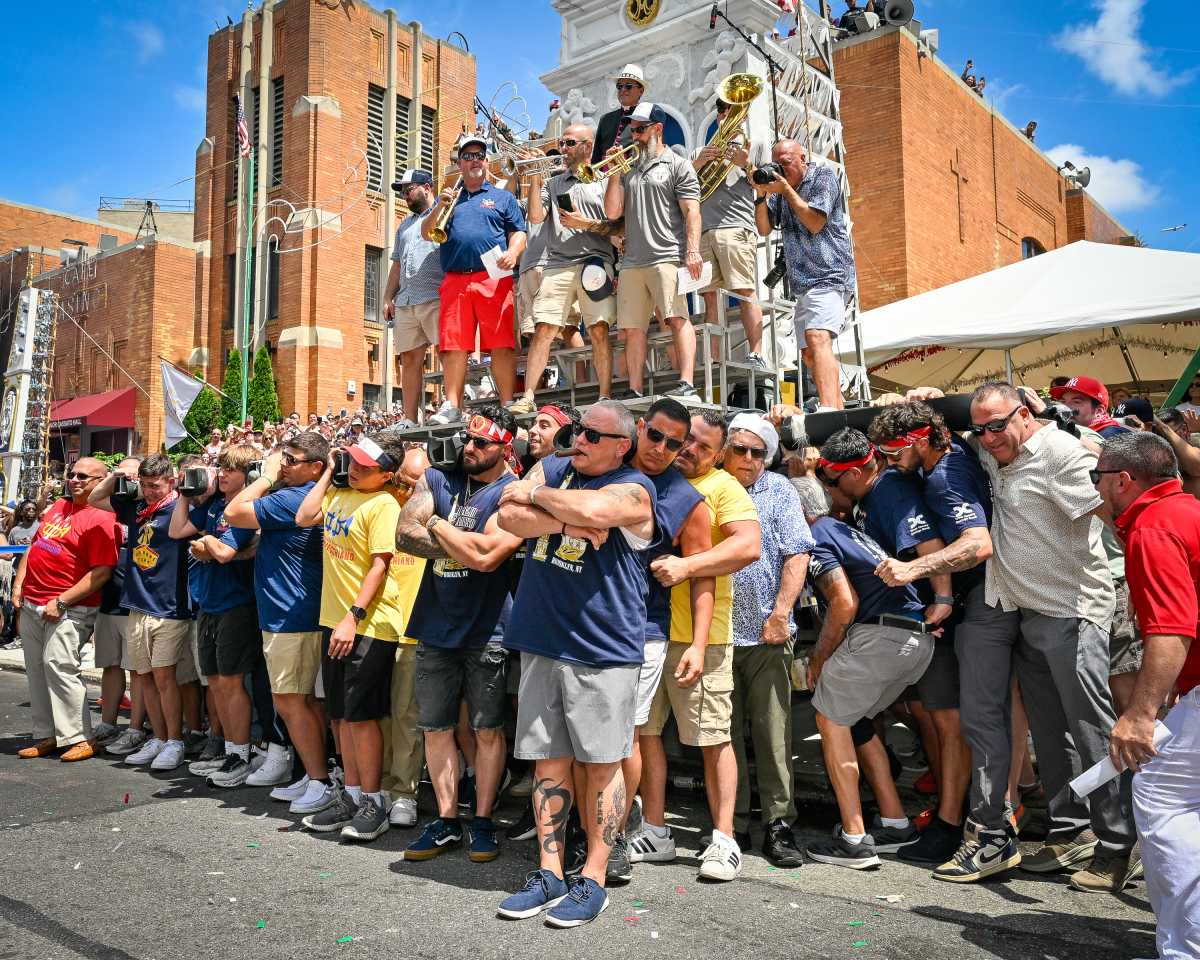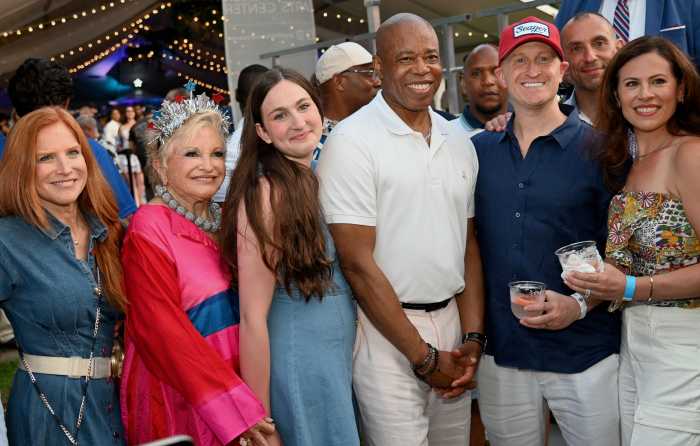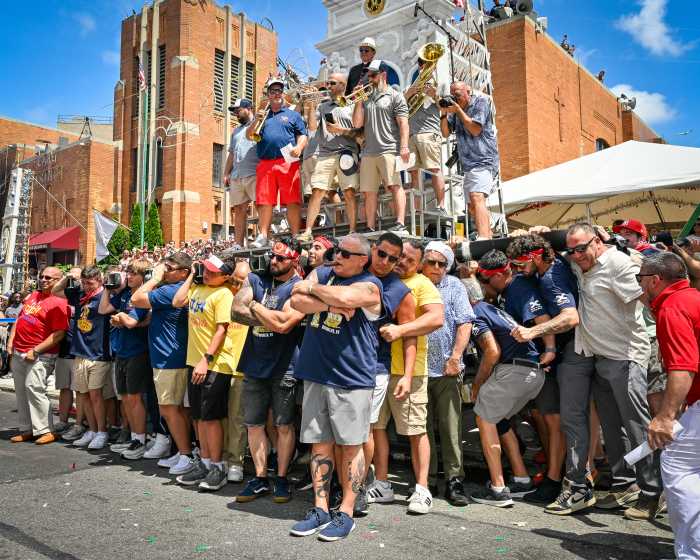By Lesley Sussman
You might say that Rabbi Greg Wall is one of a kind.
After all, how many Orthodox rabbis have you ever heard of who also happen to be highly regarded saxophonists, composers and producers, and who have even performed at Carnegie Hall, where he appeared last month with international singing star Dudu Fisher?
In fact, the newly installed rabbi of the historic Sixth Street Community Synagogue, 325 E. Sixth St., may very well be the only Orthodox rabbi in the country who is also a recording and touring jazz musician.
Rabbi Wall, who celebrated his 50th birthday at his welcoming ceremony on Sat., Oct. 31, demonstrated his unique rabbinical style by sidestepping the usual longwinded speeches common to such occasions.
Instead, the jazz rabbi, a graduate of the New England Conservatory of Music, who plays both mainstream jazz and cutting-edge, new Jewish music, wielded a mean tenor and soprano sax. Accompanied by members of his various bands, he jammed the Halloween night away, to the delight of his congregation and their guests.
Even the rabbi’s regular Sabbath services have taken on a more melodious tone than those of his predecessors, and Rabbi Wall said he hopes to infuse even more sounds of music into the life of the synagogue in the months ahead.
“I look forward to filling the synagogue with music of all kinds, and serving as a magnet for artists of all disciplines, to provide a venue to share and grow together,” he said. “In addition to classes on Jewish spirituality, texts and history, we will offer workshops for emerging and developing artists, as well as a stage for many of the world-class artists who call the East Village home.”
Rabbi Wall, a Massachusetts native who currently resides in Livingston, N.J., with his wife, Rona, a psychotherapist, and their three children, got his rabbinical ordination in 2006 after nearly a decade of study at the Livingston Community Kollel.
It was a long spiritual road to that accomplishment, one which the rabbi said he never thought he would travel because he was not raised in an Orthodox family. It was, of all people, jazz legend John Coltrane and his spiritually tinged jazz that had the greatest influence on both Rabbi Wall’s musical and religious life.
“Coltrane modeled the artist as a spiritual being,” Rabbi Wall explained. “A lot of the imagery and a lot of the techniques he used to connect to God were identical to traditional Jewish practices. In fact, some of the texts that Coltrane used seemed to come right out of the Jewish liturgy. Listening to him, the light went on for me.”
The rabbi said that, after his exposure to Coltrane’s music, “Something was planted in my brain. I started to take religion much more seriously. Before that, I wasn’t very religious because I was only exposed to suburban Reformed Judaism. It was a very weak form of Judaism. Then, later on, when I was playing events where I ran into committed Jews, I was open to Judaism the way I wouldn’t have been if I had not had that experience with Coltrane.”
It was in 1983, after graduating from the conservatory, that Wall moved to New York City to, as he put it, “seek my fortune as a jazz musician,” after which he moved to Jersey City and then Livingston. “I used to be in New York every night, even after I moved to Jersey City,” he said. “I used to play jam sessions from 1 o’clock in the morning at all the little clubs in town. I played the Knitting Factory from its very beginning.”
Wall said it kind of amazed him to be relocating back to the East Village after all these years.
“What an amazing opportunity to be part of the infrastructure here in the East Village, where I developed my musical voice years ago,” he said.
The rabbi said he is not discouraged by the decline in synagogue attendance among young Jews in the East Village area.
“I think we can say that the synagogue has not been the focal point in the life of Jewish Americans for many years,” he said. “The East Village in particular.
“My challenge is going to be to make the synagogue a primary institution in their lives. It shouldn’t only be a place where you come to for a bar or bat mitzvah, but also a place to support people socially, culturally and spiritually,” Wall said. “We want to play that role, and it’s up to us to make that compelling case. We’ll be using music and all the arts to attract them, because this is an arts community.”
In addition to his impressive rabbinical credentials, the rabbi has quite a jazz pedigree. During his 30-year musical career, he has performed around the world and recorded with a variety of bands, including Hasidic New Wave, the quintet that he co-leads with Frank London; Greg Wall’s Unity Orchestra, a pan-cultural ensemble featuring eight musicians from five continents; and Klezmerfest, an outstanding klezmer band in the great Eastern European tradition.
He has also performed with Neshama Carlebach, daughter of the late, world-famous, singing rabbi, Shlomo Carlebach, and was the musical voice of James Earl Jones in the recent feature film, “On the Q.T.”
On one of his more recent jazz/rock-tinged albums — “Later Prophets” (which is also the name of another of his bands) — Wall straddled the gates of the ancient and the avant-garde by using the prophetic visions of Ezekiel as his source of inspiration. Meanwhile, on his latest CD — “Ha’Orot” — the spiritual poetry of the influential Jewish thinker Rabbi Avraham Izchak Kook is presented spoken-word style with a jazz score.
The intersection of music and faith is a subject that dominates Rabbi Wall’s conversation.
“There are a lot of similarities between the two,” he said. “Music and all the arts really require inspiration. It comes from within you and, at the same time, it comes from without you. That surrendering to a higher power — like faith — gives you access to this cosmic flow. The channel for my own spirituality is my music.”
Wall takes over from former Rabbi Charles Buckholtz, who recently moved to Israel to pursue a publishing career. The historic landmark synagogue Wall now heads is located in a distinctive, pre-Civil War structure that once housed the St. Mark’s Evangelical Lutheran Church. In 1904, the church lost most of its congregation in a tragic fire aboard the General Slocum steamship while it was cruising up the East River — the worst disaster to befall the city until 9/11.








































